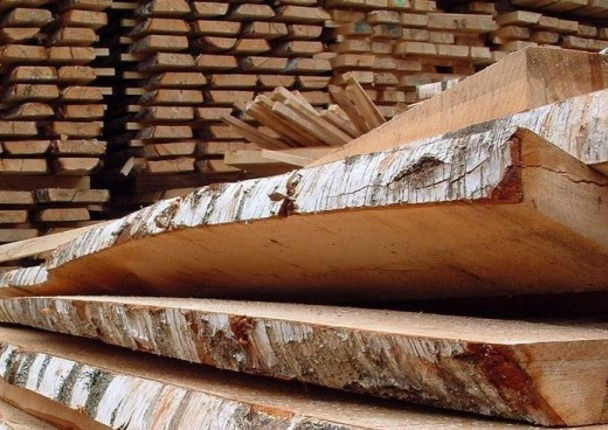Introduction

In architecture and interior design, the quality of wood floors often depends on meticulous attention to detail.. And when it comes to wood flooring, those details start at the very source: the milling and fabrication process. This blog post aims to showcase our Milling and Fabrication Oversight services the complexities of milling and fabrication, focusing on how our company understands the unique needs of architects and interior designers and offers tailored solutions to meet those needs.
Step 1: The Importance of Milling and Fabrication Oversight
Understanding Your Needs
For architects and interior designers, the quality of wood flooring is not merely a matter of aesthetics; it's a complex interplay of factors that starts with the milling and fabrication process. The way the wood is cut, shaped, and finished can have profound implications for its durability, stability, and appearance. These factors, in turn, affect the overall integrity of your design project, from the floor's ability to withstand foot traffic and environmental changes to its visual harmony with other design elements.
Our Solution
Recognizing the critical role that milling and fabrication play in the final product, we offer a comprehensive oversight service that goes beyond cursory evaluations. Our experts are collaborating with the milling facilities to oversee each step of the process, from the selection of raw materials to the intricate details of dimensions and wood grade. We ensure that each plank is milled to exact specifications, taking into account factors like grain direction, moisture content, and dimensional stability. This meticulous oversight ensures that the wood flooring meets your stringent quality criteria and is perfectly aligned with your project's specific needs.
Step 2: Milling Techniques
Understanding Your Needs
The milling process is a crucial phase that can significantly impact the quality, texture, and durability of the final wood flooring product. Different milling techniques can produce various outcomes, from the texture and finish to the wood's stability and how it reacts to environmental factors like humidity and temperature. As architects and interior designers, you require a deep understanding of these techniques to make informed decisions.
Our Solution
Our experts stay in touch with the milling facilities to oversee the entire milling process, ensuring that the techniques used are perfectly aligned with your project's specific requirements. Whether you're aiming for a rustic, hand-scraped finish, a sleek, modern look, or something in between, we ensure that the facilities will provide you with the most suitable wood material for your needs.
This could involve choosing between plain-sawn, rift-sawn, quarter-sawn, or live-sawn cuts, each with its own set of characteristics and advantages. Additionally, we offer a variety of wood patterns such as herringbone, chevron, and plank to further customize your design. Whether you opt for engineered or solid wood, each construction type is available to best suit your project's functional and aesthetic requirements.
By offering this level of oversight and customization when working with the mills, we aim to provide architects and interior designers with wood flooring that not only meets but exceeds your expectations.

Step 3: Fabrication Processes
Understanding Your Needs
After the milling process, the wood enters the fabrication stage, a critical phase that can significantly influence the final product. This stage can include a variety of processes such as staining, finishing, and distressing, each of which must be executed with precision to meet your project's specific requirements. The fabrication process also determines how the wood will respond to wear and tear, environmental factors, and maintenance—key considerations for architects and interior designers.
Our Solution
Our role doesn't end with milling; we extend our oversight to the fabrication process to ensure that each step aligns with your project's specifications. This involves close collaboration with the fabrication facilities to monitor and guide processes like staining, which must be consistent in hue and saturation across all planks.
We also offer wood fuming, an advanced process that reacts with the tannins in the wood to create deep, rich tones that permeate the entire plank. This provides an additional layer of customization, allowing architects and interior designers to achieve a unique, aged appearance that can't be replicated with surface-level treatments. Application of finishes, whether you're opting for a matte, semi-gloss, or high-gloss finish, are done by the experts to ensure it meets durability and aesthetic requirements. Distressing techniques, such as hand-scraping or wire-brushing, are also offered to create the desired texture and visual effect.
By providing this level of detail and oversight in the fabrication process, we aim to deliver a final product that not only meets but exceeds the expectations of architects and interior designers, ensuring that your wood flooring is a true reflection of your design vision.
Step 4: Virtual Consultation
Understanding Your Needs
Time is a scarce resource for busy professionals like architects and interior designers, who often juggle multiple projects and responsibilities.
Our Solution
We offer virtual consultations, conducted by certified wood flooring experts, allowing for real-time collaboration and immediate answers, all designed to expedite your decision-making process.
The complexities of wood flooring need not be a stumbling block in your project's path. Schedule a virtual consultation with our certified wood flooring expert today and take the first step toward a flawless wood flooring solution tailored to your specific needs.
Contact Us Today at 908-232-6600
Comments